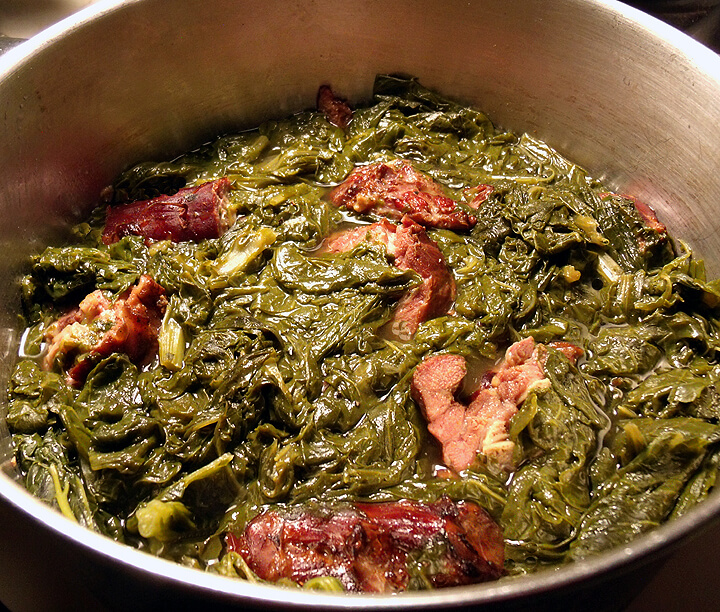Like any Southern city, Jackson, Mississippi has residents from across globe who have good reason not to know they should have a pot of peas on the stove on Dec. 31 or Jan. 1, as well as people living in detached, pretentious affluence who consider peas, collard, mustard, and turnip greens, coarse, common, and unfit for their table.
Such people are by far the exception rather than the rule, and most people in Mississippi’s capitol city cook leafy greens and field peas at New Year in observance of regional tradition. Black-eyed peas entered the Southern repertoire by way of Sephardic Jews who settled in South Carolina, Georgia and Maryland well before the Civil War, and they brought with them their tradition of eating black-eyed peas at Rosh Hashana.
Stewed greens are usually served as well, because leafy cool weather crops thrive in our open winters. The type of greens is primarily a matter of preference, to a lesser extent of geography, but invariably turnip or mustard, collard or cabbage, often a mix. As a cursory observation, cabbage is most often served in urban households, turnip and mustard greens in the country, and collards more often in the lower South, Georgia, and the Carolinas.
The tradition that associates these foods with financial prosperity is clouded in folklore, but then luck has always been associated with riches. In the past, people were known to have cooked peas with coins to ensure wealth, yet because of their shape peas are suggestive of coins, as leaf greens are of paper money, a more obvious analogy in this country where our currency is greenbacks.
However pecuniary, it’s comforting that the South’s traditional New Year’s table offers buoyancy for the uncertain future.


